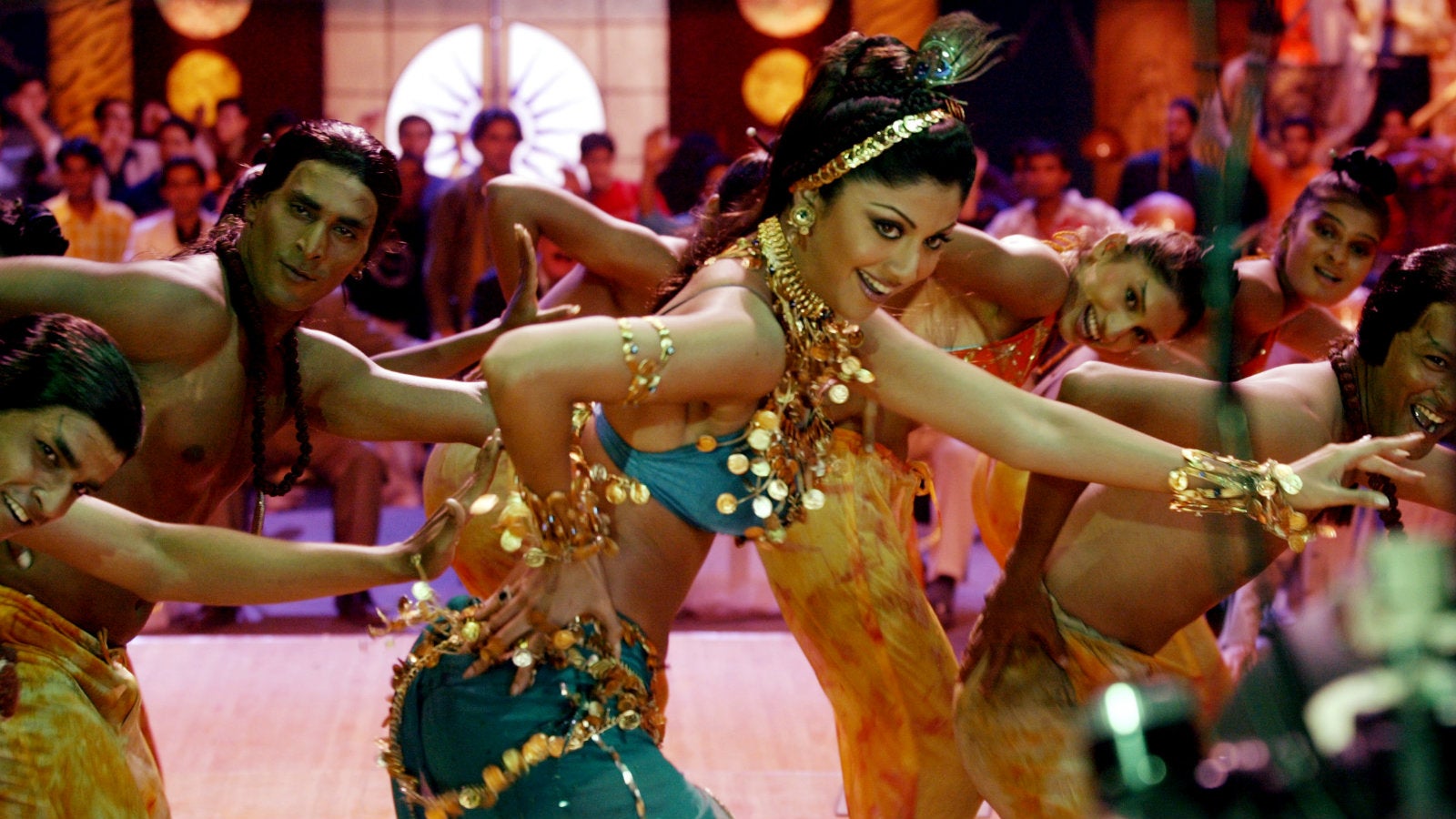Boys and bodies: What women sing about in Hindi movies
While characters in Hindi films sing about everything from “saree ke fall” to “selfies,” there’s one thing they always ignore: a woman’s personality.


While characters in Hindi films sing about everything from “saree ke fall” to “selfies,” there’s one thing they always ignore: a woman’s personality.
Instead, these songs dedicate endless words to the bodies of their female leads.
In Kala Chashma from the Sept. 9 release Baar Baar Dekho, for instance, the male singer pays his female love interest a slightly dubious compliment, comparing the beauty mark on her chin to the dark spots on the moon. She inexplicably demurs with “Main Katrina toh sohni ve” (I am more beautiful than Katrina). Similarly, in Kar Gayi Chull, from Kapoor and Sons, the female lead compares other women to sparrows and herself to a bulbul.
A female character’s personality is rarely the subject of a song in a Hindi film. After the trend of item numbers named after women took off, female characters sang more about their bodies than their personalities, describing themselves with one demeaning metaphor after another.
Munni compared herself to Zandu Balm in Munni Badnaam Hui; Sheila declared that she was “too sexy” for any man; Chameli announced that she was serving herself to men (“Pyaar se paros loongi, toot le jara”); Mary called herself Sau Takka (100%) the property of another man. Their less popular counterparts, Jalebi Bai and Babli Badmash, also described bodies in similarly degrading ways.
This kind of lyric is not limited to item numbers. In Roy (2015), for example, the female protagonist sings “Chittiyan kalaiyaan re, oh baby tere hisse aaiyaan ve” (My fair wrists are yours).
What’s more, it’s also not unusual for female characters to describe themselves in Hindi songs in terms of their love for a man. In fact, female characters rarely sing about men in these film unless they’re pledging their devotion in no uncertain terms. In songs like Kamli from Dhoom 3, or Deewaani Mastani from Bajirao Mastani, women sing declarations like “Main ruthiya yaar manawangi” (I will placate my disgruntled lover) and “Nazar jo teri laagi main deewani ho gayi” (When you gaze at me, I am besotted by you.)
Even among men singing in Bollywood songs, the focus remains solely on the body or on a woman’s clothing. In Gabru Ready to Mingle Hai from Happy Bhaag Jaayegi, the male lead cannot stop raving about the DP (display picture) of his heroine, which quite strangely, but predictably, raises his BP (blood pressure).
A lyrically interesting exception is the song Aali Re from No One Killed Jessica, which describes Rani Mukerji’s character with lines like “Temper hai bhayankar udhde cactus ki daali” (Her temper is terrible, she uproots cactus stems).
Men sing about other men far more flatteringly in Hindi films. Consider songs like Shah Ka Rutba from Agneepath and Behti Hawa Sa Thha Woh from 3 Idiots, both of which are almost obsessive odes to the personalities of the men they describe. Even the otherwise not-so-complementary Tharki Chokro from PK offers a sweet description of the titular character with words like “Pyaaro laage tu, bhoolo laage tu” (You appear lovable, you appear innocent).
And male characters rarely sing about male bodies. The only exceptions are Aata Majhi Satakli, from Singham 2, in which a man sings about how much his chest and biceps measure (“Mera sola ka tola, chiyaalis ki chaati”) and Tattad Tattad in which Ranveer Singh’s character invites people to gaze upon his body (“Ramji ki chaal dekho, aankhon ki majaal dekho”).
However, men in Hindi films describe their personalities in painstaking detail. Lungi Dance, from Chennai Express, intended to be a tribute to the actor Rajinikanth, is a litany of self-praise. The lyrics include the male singer cavalierly suggesting that the listeners should simply look him up on Wikipedia.
In Selfie Le Le Re from Bajrangi Bhaijaan, Salman Khan’s character raps about himself confidently: “Mere jaisa na hoga, chand pe na Cheen mein” (There is no one like me, neither in China nor on the moon). The song is a lyrical package of the titular character’s personality, and its music often appears in the film as Bajrangi’s theme.
As more Hindi films are named after, or describe, the characters that they are about, title tracks that extol the virtues of the principal characters are becoming quite common. Consider the headliners of films like Dabanng, Bhaag Mikha Bhaag, Bodyguard, and, more recently, Rustom. All these songs contain typically smug descriptions of the male protagonist.
The lyrics of the title track of Barfi, Ala Barfi, offer a more meandering and ironic statement on Ranbir Kapoor’s character. And Ghanchakkar Babu from Ghanchakkar is a quirky take on its titular character.
But all these songs praise men, and, more importantly, they are sung by men too.
On the other hand, the soundtracks of films named after female protagonists, such as Queen, Neerja, and Mary Kom, do not contain a similar song about their titular characters. And although the title tracks of Aisha, Bobby Jasoos, and Dolly ki Doli are about the personalities of the main female characters, they are all sung by men. While Piku has a deliciously-worded title track about Deepika Padukone’s character, sung by Sunidhi Chauhan, it never makes its presence felt in the film.
Hindi films are being praised for gradually including more women in their narratives and for crafting diverse female characters. But even these films seem to be several crucial miles away from a song in which a woman can confidently describe herself with a line as casual as “Mere baare mein Wikipedia pe padh lo” (Just read about me on Wikipedia).
This post first appeared on Scroll.in. We welcome your comments at [email protected].